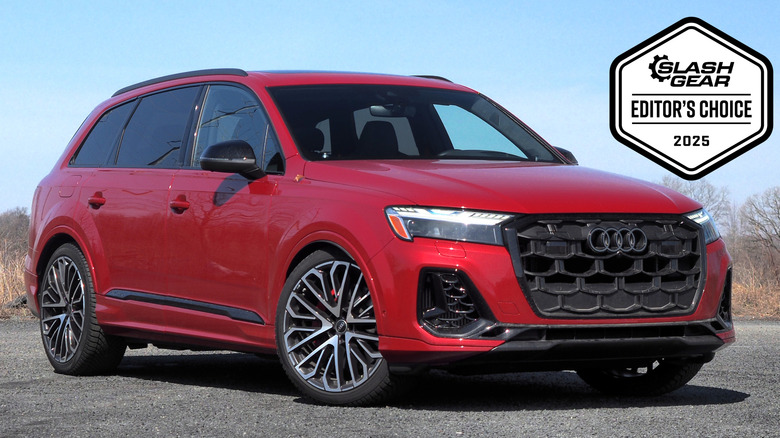
We might earn a commission when you buy through links provided.
While Audi is rapidly pushing towards full electrification across numerous models, this doesn’t imply that traditional high-performance elements like the venerable V8 engine have been sidelined. Take, for instance, the 2025 SQ7—it stands out as one of the biggest choices within Audi’s lineup and also boasts incredible power. Despite being pricey and fuel-hungry, it’s difficult not to feel some allure toward such an imposing machine.
When the second-generation Q7 debuted in 2015, there was some concern that its redesign had made the SUV overly aggressive and angular. In comparison to the rounded edges of its predecessor, this look required getting used to; however, I believe it has aged well aesthetically. The vehicle carries a substantial presence with a kind of Bauhaus-like sturdiness that continues to be impressive even after a decade.
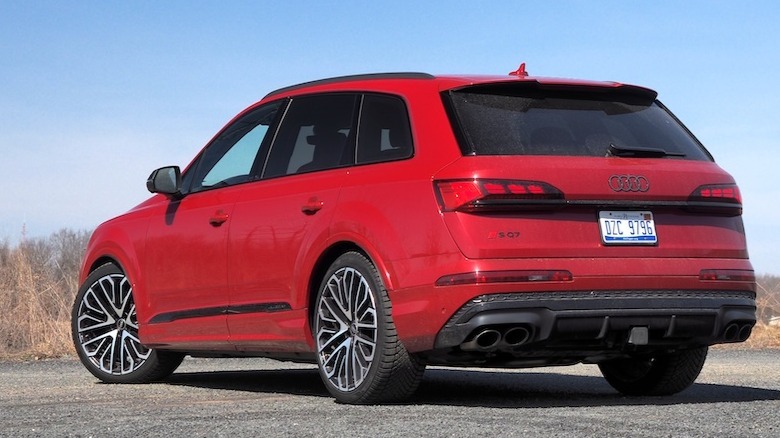
Unlike the standard Q7, which offers 19- and 20-inch wheels, the SQ7 comes equipped with 21-inch wheels as standard. If you opt for the larger 22-inch wheels — typically fitted with summer tires instead of the usual all-season ones — they add an additional $1,500 onto the base price of $90,800 (excluding a $1,195 delivery charge).
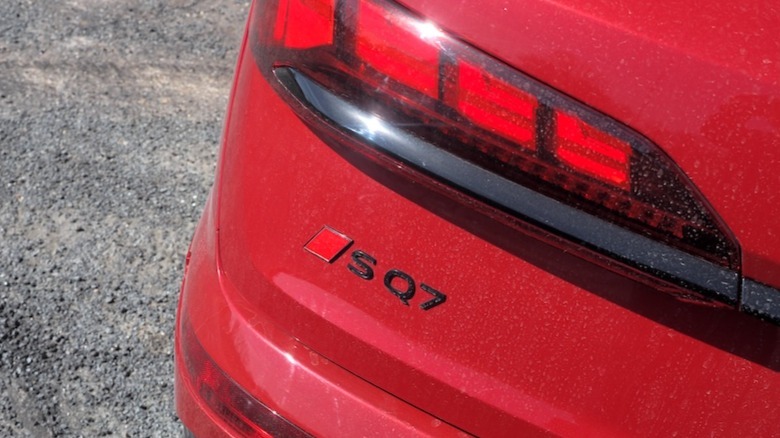
Although solid white is the sole paint option Audi doesn’t add extra charges for, they do offer several attractive blue choices. This includes the ever-favored Daytona Gray pearlescent as well as the striking Chili Red metallic showcased here, both available at an additional cost of $595. It’s worth noting that Audi stands out from typical luxury brands which often stick with a color range dominated by shades of gray, silver, and more grays.
Read more: 5 Cars GM Never Should Have Discontinued
It May Not Have the Highest Horsepower, but That Isn’t Important
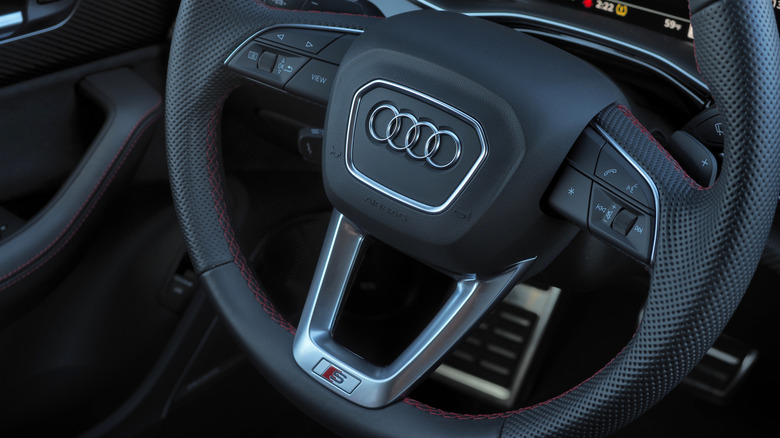
The primary attraction of the SQ7 lies in its 4.0-liter bi-turbo V8 engine, which generates 500 horsepower and 568 lb-ft of torque. This powerplant works alongside an 8-speed Tiptronic automatic gearbox and Quattro all-wheel-drive system, complemented by standard rear-wheel steering and adaptive air suspension. An additional investment of $6,000 for the S Sport Package includes features such as active roll stabilization and a sports rear differential.
In terms of sheer power, the large Audi has been surpassed. BMW X7 M60i brings 523 horsepower to the event; Mercedes-AMG's slightly hybridized version GLS 63 SUV provides an absurd 603 horsepower. Nonetheless, among these three, the SQ7 leads in outright acceleration. It achieves a 0-to-60 mph sprint in just 4.0 seconds, outpacing the AMG by one-tenth of a second, whereas the slower BMW claims a 4.5-second run for the same feat.
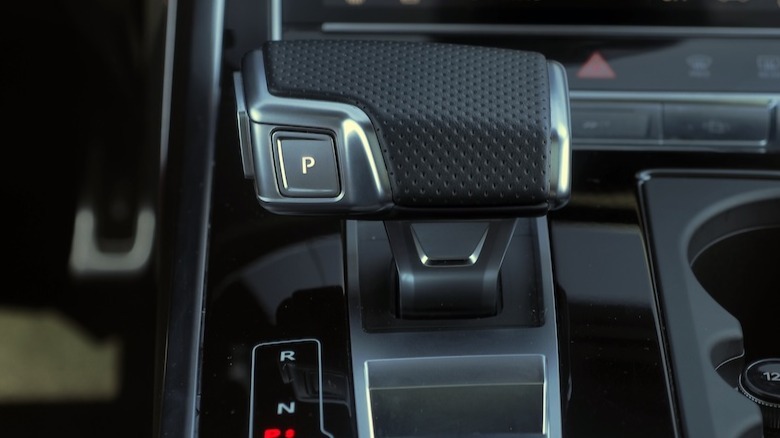
The X7 will cost you at least $111,900 (including destination fees), whereas the AMG comes with a price tag of $149,500 (also plus destination). In comparison, the Audi’s starting price of $91k suddenly looks much more reasonable, particularly if you've got access to charging stations. The Rivian R1S in its Dual-Motor Performance version beats them all with its $88,900 (including destination charge), 665 horsepower, and 3.4-second 0-60 acceleration.
Quicker and More Nimble Than Expected
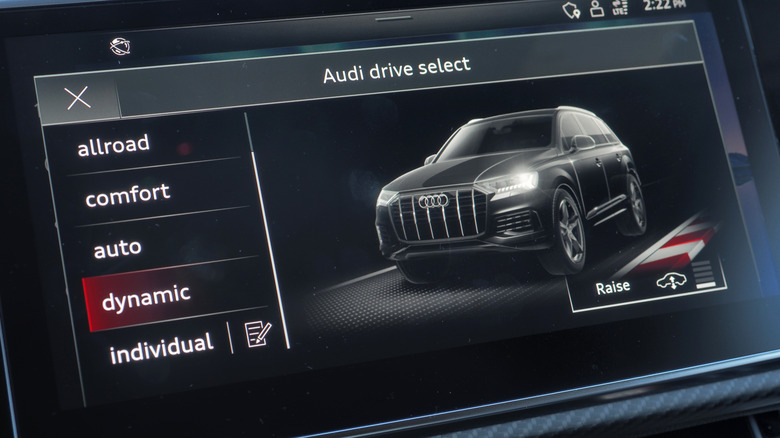
The Rivian might excel in speed, yet it falls short when compared to the delightful sound produced by the Audi. In Comfort mode, the large V8 runs smoothly and quietly, but shift into Dynamic mode—or simply press down hard on the accelerator and raise the RPMs above about 3000—and you'll hear a raw, aggressive bark mixed with deep rumbles that become almost irresistible. The engineers responsible for crafting both the SQ7’s engine and exhaust system undoubtedly merit recognition, as they've managed to create a thrilling combination of power and intensity.
The Audi surprises with its agility as well. Despite its substantial curb weight of almost 5,300 pounds, it handles this mass impressively. In contrast, Audi's feistier RS models There aren’t any RS-exclusive driving modes available, but the Dynamic setting provides ample stiffness. Despite its size, this large SUV handles like a compact car with steering that strikes a nice balance—responsive without being overly heavy. In short, the opportunity for controlled enjoyment far surpasses what most passengers’ digestion can handle.
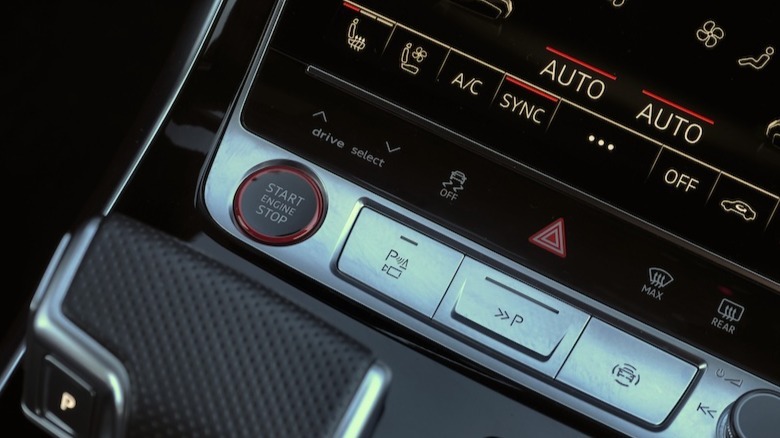
Switch to Comfort mode, and the air springs adjust for pampering rather than handling. Smooth and regal, only the oversized wheels of the SQ7—and their thin sidewalls—hint at the car’s sporty inclinations. The ride becomes notably softer when cruising. a regular Q7 , but doing so eliminates the delightful dual nature that this top-of-the-line model provides.
Quiet Luxury Inside
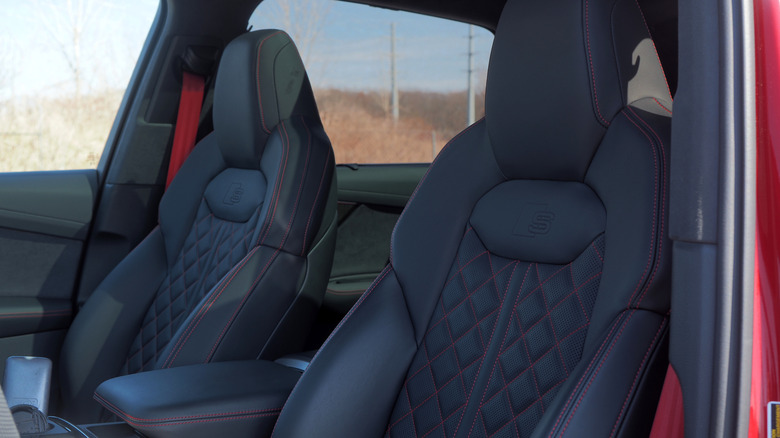
Inside, you have the option of Valcona leather in black, gray, or red as standard features, complemented by well-padded sports seats up front. For an additional $3,700, the Luxury package includes a Dinamica headliner along with extending leather coverage to the dashboard, armrests, and upper door panels. An extra $500 gets you the Audi Sport Crimson Red Stitch package, featuring red stitching on elements such as the steering wheel and door armrests, alongside a coordinating red seat belt. While these additions are appealing, similar to how spending $2,500 for the Night Vision Assistant might seem excessive since it only provides a somewhat unnecessary low-light image displayed on the dash—skipping these extras likely won’t leave you feeling deprived.

The $6,100 Prestige package offers an enhanced set of features. This bundle encompasses soft-close doors along with ventilated and massaging front seats. Additionally, it provides heated rear seats, a head-up display, advanced remote park assist plus functionality, dual-pane sound-dampening side windows, headlight washers, OLED tail lights, and Audi’s sophisticated yet functionally restricted HD Matrix-design LED headlights in the U.S. market. For $4,900 extra, you can get the Bang & Olufsen audio system featuring retractable tweeters, which delivers excellent sound quality although this represents a significant financial outlay.
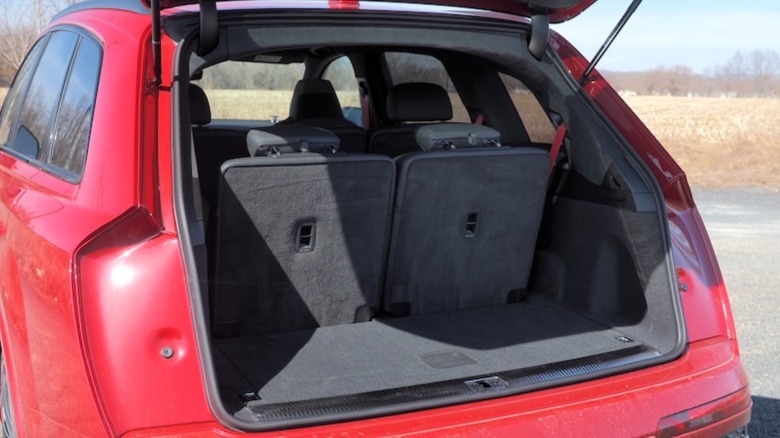
The spaciousness in both the front and middle rows is noteworthy, though the lack of captain’s chairs in the second row stands out. However, the third-row legroom measures only 29.2 inches, making it suitable primarily for children. Additionally, the cargo area falls short compared to those found in large SUVs from brands like BMW and Mercedes. For instance, the SQ7 provides approximately 13.9 cubic feet when all seats are upright; this increases to around 35 cubic feet upon folding the third row electronically, and rises further to slightly above 68 cubic feet once the second and third rows have been folded down. In contrast, competitors such as the GLS and X7 boast an extra storage capacity ranging between 17 to 22 cubic feet.
A Modest Dashboard, According to Contemporary Standards

In an age of vast, widescreen dashboard displays, the SQ7's controls feel charmingly concise. There are two center touchscreens -- the upper handling multimedia, navigation, and vehicle settings; the lower responsible for the quad-zone climate control and drive assistance -- plus a fully-digital instrument cluster with a handful of layouts. Audi's infotainment UI feels simplistic, too, compared to the (arguably over-designed) visuals in rival luxury SUVs. Wireless Apple CarPlay and Android Auto are standard.
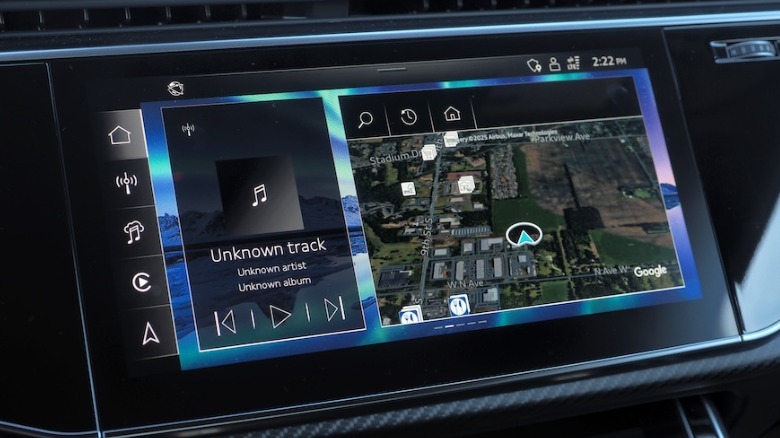
It features a tangible volume dial, specific buttons for switching between driving modes, and a park assist button that feels so nice, one wishes they had an excuse to use it frequently. Actually, the regular all-wheel steering makes the SQ7 incredibly easy to maneuver in compact parking spaces.
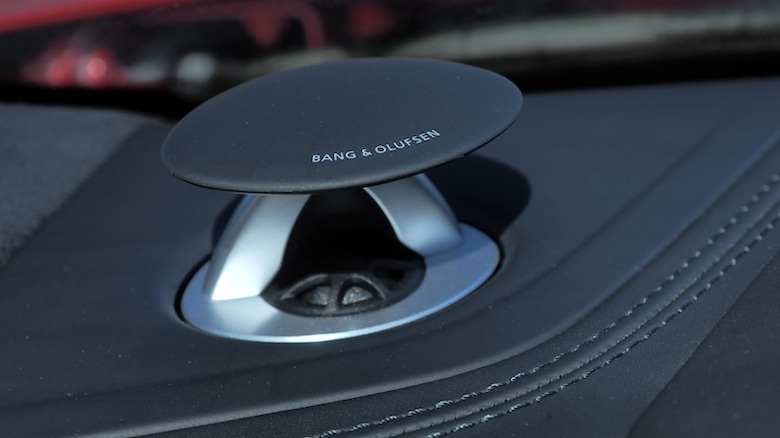
The overall level of sophistication here makes the few mistakes even harder to understand. The SQ7’s plastic paddle shifters disappoint every time they’re used; lacking an automatic brake hold feature introduces minor irritation during city drives. Activating the heated steering wheel requires navigating through a submenu. While not significant enough to ruin the Audi experience entirely — in truth, these small irritations might actually highlight how balanced the SUV usually is — they remain annoying nevertheless.
2025 Audi SQ7 Verdict
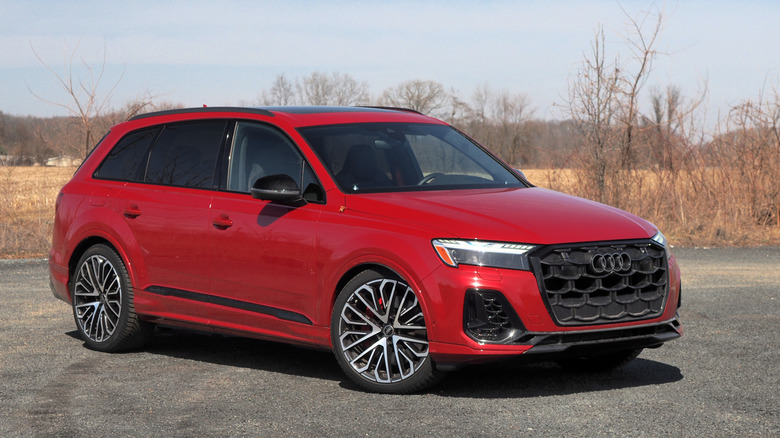
Overall, the three-row Audi excels at balancing utility with performance, remaining impressive among contemporary competitors. Equipped with a $750 trailer hitch, it can haul up to 7,700 pounds. Despite delivering fuel economy figures of 15 mpg in cities, 21 mpg on highways, and 17 mpg combined—making it somewhat gas-guzzling—it still marginally outperforms options such as the mild-hybrid AMG GLS. While models like the BMW might appear flashier or catch more attention, one could argue that not all buyers wish to flaunt their luxury SUV acquisition openly.
This highly outfitted version--featuring large wheels, Prestige amenities, and S Sport upgrades--comes in at $119,640 after adding the destination fee. While I won’t claim this price tag is inexpensive since it definitely isn’t, within its class, it’s just as competitive as the V8 model.
A certain level of suspended reality is needed when considering these ultra-powerful three-row luxury vehicles. It’s somewhat absurd to think that 500 horsepower is essential for a family-oriented sport utility vehicle. Thus, their ability to effectively bridge both realms likely determines their ultimate rating. Although the 2025 SQ7 isn’t the latest model in this segment, its blend of velocity, ample luxurious space, and relatively modest price tag contribute to its consistent popularity.
Looking for the newest in technology and automotive developments? Sign up for our complimentary e-newsletter. For the most recent news updates, detailed guidebooks, and practical advice, delivered once via email.
Read the original article on solusikaki.com .
